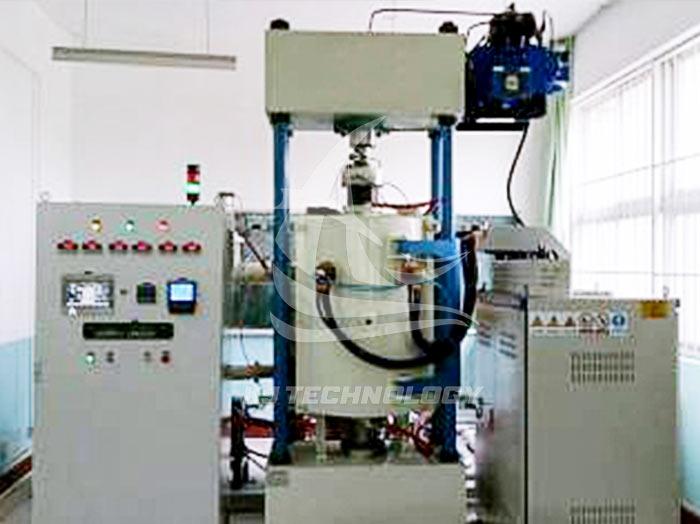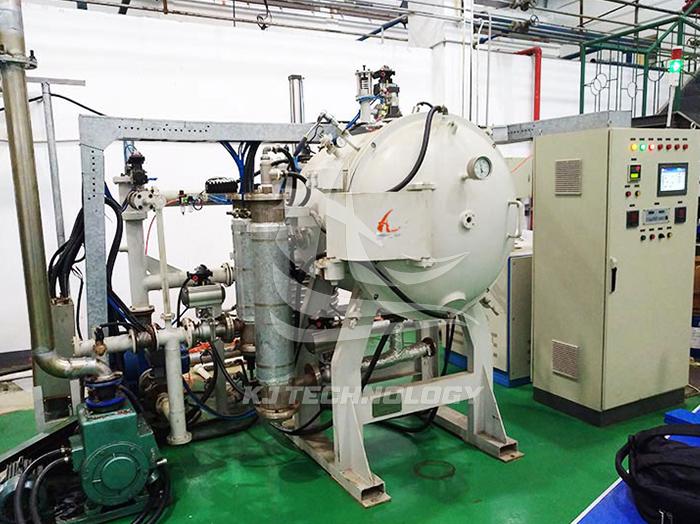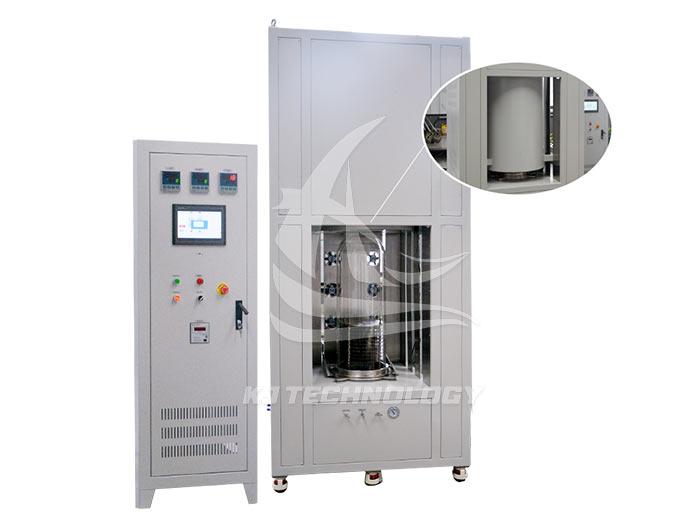Customized vacuum annealing furnace daily maintenance
 06-18-2025 Author: KJ technology
06-18-2025 Author: KJ technology
The daily maintenance of customized vacuum annealing furnaces is the key to ensuring long-term stable operation of equipment, extending service life, and ensuring product quality. From the five dimensions of cleaning and maintenance, component inspection, system calibration, safety protection, and record management, the following outlines the maintenance points and operating standards of the system:
1. Cleaning and maintenance
Furnace cleaning
Frequency: At least once a week or after the end of each cycle.
method:
Use a dust-free cloth or vacuum cleaner to remove residue from the furnace and avoid metal debris contaminating subsequent workpieces.
For stubborn oxide layers, use a specialized furnace cleaner (such as a weakly acidic solution containing ammonium hydrogen fluoride) to wipe, then rinse with deionized water and dry.
Caution: It is strictly prohibited to use hard tools such as wire brushes to prevent damage to the coating on the inner wall of the furnace.
Seal maintenance
Inspection cycle: Daily pre operation inspection, monthly in-depth maintenance.
Operation:
Observe whether there are cracks, deformations, or aging in O-rings, flange gaskets, etc.
Clean the sealing surface, remove oil and impurities, and apply vacuum silicone grease (such as Dow Corning 705) to enhance the sealing performance.
Replacement standard: When the seal hardens or undergoes permanent compression deformation exceeding 20%, it must be replaced immediately.
Cleaning of water cooling system
Water quality requirements: Use deionized water or softened water with a conductivity of ≤ 5 μ S/cm.
maintain:
Check the water-cooled pipes monthly for scale or algae, and use a citric acid solution (concentration 5%) for cyclic cleaning.
When replacing the cooling water, add rust inhibitors (such as sodium nitrite) to prevent pipeline corrosion.
2. Component inspection
Vacuum pump maintenance
Daily inspection:
Observe whether the oil level is at 1/2~2/3 of the oil window and whether the oil color is clear (turbidity or emulsification needs to be replaced immediately).
Record the operating noise and vibration of the vacuum pump, and check the bearings or impellers in case of abnormalities.
Regular maintenance:
Replace the vacuum pump oil (such as Edward Ultragrade 19) and clean the oil mist separator every 500 hours.
Check the belt tension every 2000 hours and adjust it to be able to press 10-15mm.
Heating element detection
Resistance measurement: Use a high-precision multimeter to measure the resistance value of the heating element every quarter. If the deviation from the initial value exceeds ± 5%, it needs to be replaced.
Appearance inspection: Observe whether the heating wire is broken, oxidized, or deformed, with a focus on the high-temperature area (such as the middle of the furnace).
Thermocouple calibration
Calibration cycle: Every six months or when the temperature display deviation exceeds ± 2 ℃.
method:
Measure the temperature of the high-temperature furnace simultaneously using a standard thermometer (such as a second-class standard platinum resistance thermometer) and a thermocouple, and compare the difference.
For deviations exceeding the allowable range, adjust the temperature controller parameters or replace the thermocouple.
3. System calibration
Vacuum calibration
Calibration tool: Use a standard vacuum gauge (such as MKS Baratron) to compare the readings of the equipment's built-in vacuum gauge.
Steps:
Select 5 calibration points within the range of 1 × 10 ⁻¹~1 × 10 ⁻⁵ Pa and record the deviation values.
Correct or adjust the zero point and full potentiometer of the vacuum gauge through software.
Temperature uniformity test
Testing method:
Arrange 9 thermocouples evenly in the furnace (such as a 3 × 3 grid), heat up to the process temperature, and hold for 1 hour.
Record the temperature at each point and calculate the maximum temperature difference (should be ≤± 5 ℃).
Rectification measures: For areas with excessive temperature difference, adjust the power of heating elements or optimize the placement of workpieces.
4. Security protection
Electrical safety inspection
Insulation test: Use a 500V megohmmeter annually to measure the insulation resistance of heating elements, motors, etc. to ground, with a requirement of ≥ 1M Ω.
Grounding inspection: Check monthly whether the grounding wire connection is firm and the grounding resistance is ≤ 4 Ω.
Pressure safety protection
Explosive disc inspection: Every six months, check whether the explosive disc is intact and whether the installation direction is correct (pressure release direction facing the safe area).
Pressure gauge calibration: Send the pressure gauge to the metrology department for calibration every year, and replace it when the error exceeds ± 1.6%.
Emergency stop test
Test frequency: Simulate emergency shutdown every quarter, check the response time of the emergency stop button (≤ 0.5 seconds) and the equipment linkage function (such as immediately cutting off the vacuum pump and heating power supply).
fault analysis
Conduct root cause analysis (such as 5Why method) on equipment failures and develop preventive measures.
Example:
Fault phenomenon: The vacuum degree cannot reach 1 × 10 ⁻ ³ Pa.
Root cause analysis: molecular pump oil contamination → oil mist separator blockage → vacuum pump inlet filter screen damage.
Improvement measures: Shorten the cleaning cycle of the oil mist separator to 300 hours and increase the mesh size of the air inlet filter.
summarize
The daily maintenance of customized vacuum annealing furnaces should follow the principle of "prevention first, equal emphasis on maintenance and repair", and ensure equipment performance through standardized processes and quantitative indicators (such as temperature uniformity ≤± 5 ℃, vacuum degree deviation ≤± 1.6%). Suggestion:
Develop a "Maintenance Manual for Vacuum Annealing Furnace" to clarify the operating standards for each link;
Provide regular training for operators (such as once every six months), and only those who pass the assessment can take up their posts;
Sign long-term maintenance agreements with equipment suppliers to ensure timely supply of key spare parts such as heating elements and vacuum pumps.
Through systematic maintenance, the equipment failure rate can be significantly reduced (target ≤ 2 times/year), the service life can be extended to more than 15 years, and the product qualification rate can be guaranteed to be ≥ 99%.








